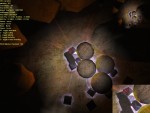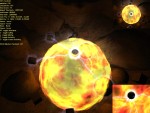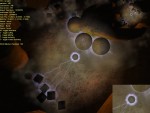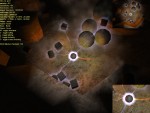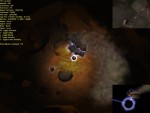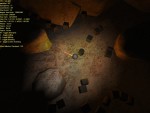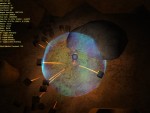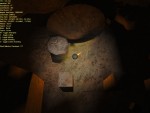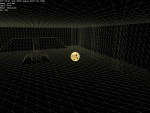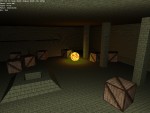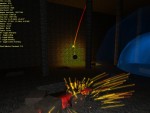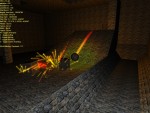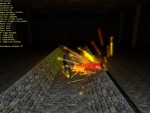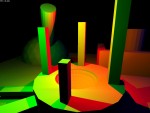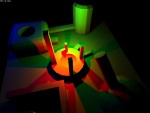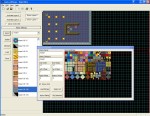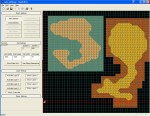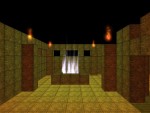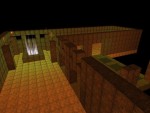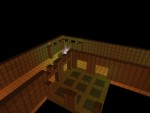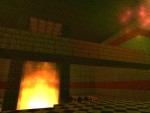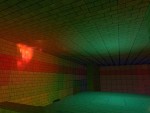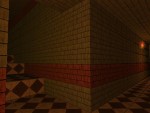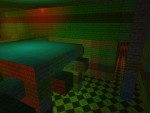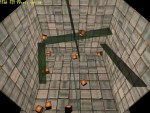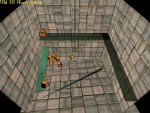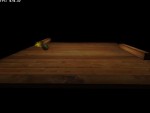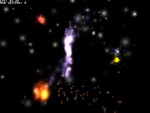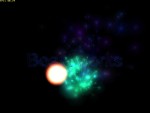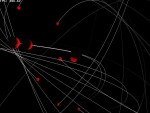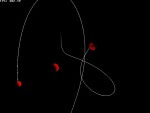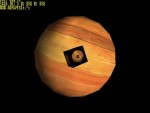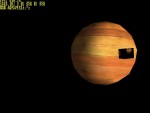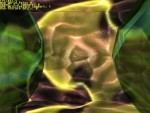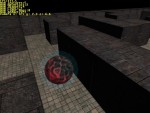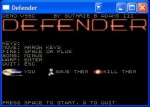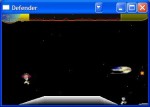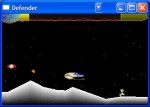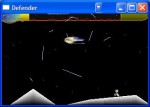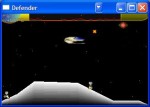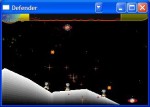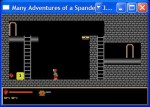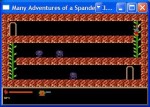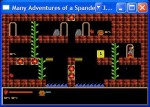Ball Physics Game 2004
These are multiple iterations of a magnetic ball game from when I started re-writing the graphics engine for CAGE.
Shadow Volumes 2004
Simple shadow volume demo that was written while rewriting the graphics engine.
Tile Map Editor 2002
Developed around 2002, I wrote this tool to help my buddy and coworker John and I develop games for the GameBoy Advance in our spare time. I’ve made a couple of similar DOS based tools in Pascal and C++ in the early 90s, using graphics libraries I’d written throughout high school to build windows like interfaces and 2D games. I still have all of the source code and wish there was a way for me to build and run them today. I’ve looked into DOS box as a possible answer.
Layered 3D Tile Map System With Particles and Projected Light Maps
This is one of the last demos that I made on the engine preceding CAGE. I always loved Legos and didn’t have access to real 3D modeling software outside of work. If I had known that’s all you needed to become a multimillionaire and get bought out by Microsoft then I would’ve never stopped.
Attempt at physics engine 2002
I never got the angular factor 100% correct but the collision itself was spot on, with hey movable floor and rotating platforms constantly hitting and moving crates.
Particle and Trail System 2001
This was the first serious, reusable particle system that I had written. It didn’t have any hierarchical aspect and trails were handled separately but every parameter head start and end values that could be randomized. It used to be engines resources to him so that one particle could spawn another one, as well as textures and materials.
Render to Texture 2001
This was my first attempt at entering too and I’ll screen surface in OpenGL.
Material System 2001
Simple fixed function material system for specifying material and texture parameters. Supported multi-texting and multiple passes.
Defender 1999
I had to write this game in 2 weeks as part of my interview to get into Acclaim (then Iguana) Entertainment. My f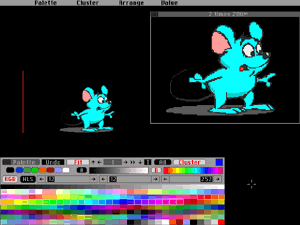 irst recruiter dropped the ball so I picked it up, re-applied, did the demo, did the art, did the animations, ported to DirectX, had a very grueling in person interview, and got the job. At the time, I was most proud of my use of templatized behaviors to drive the various effects, which seems like a ridiculous idea now.
irst recruiter dropped the ball so I picked it up, re-applied, did the demo, did the art, did the animations, ported to DirectX, had a very grueling in person interview, and got the job. At the time, I was most proud of my use of templatized behaviors to drive the various effects, which seems like a ridiculous idea now.
The interviewer and technical director was more impressed with the random, gradiated terrain, parallax star field, and that it wasn’t completely programmer art. Most of it looks silly but the little astronauts were actually pretty well animated.
Several years before that, my dad got me a program called Autodesk Animator. I fell in love with it because of this amazing animated, cartoon mouse. I used it for every piece of pixel art that I created until I couldn’t run it on my computer anymore.
Spandex 1996
This was my final project during my senior year in high school. The character is some random guy, in a spandex outfit, stuck in a computer. He spits fireballs, collects keys to go from room to room, and beating hearts to stay alive while fighting purple monsters.
Yes, I was the computer club president for three out of the four years that I was in high school. I was also the teachers assistant and helped teach my senior class. I was very fortunate that my dad worked for IBM and Microsoft and had access to so many books that I consumed relentlessly. I built many other games and demos using Turtle Pascal, Turbo and Borland C++, x86 assembly, and accessing the VGA memory address. I learned algorithms for line drawing, flood feeling, bit masking, page flipping, and so much more from 12 to 18.
